ARTWORKS WERE HERE, 2014, the size that you are looking at now, the material that you are involved now, 2014
ARTWORKS WERE HERE
‘ARTWORKS WERE HERE’라는 작업은 우리가 예술을 어떻게 소비하고 인식하는 가에 대한 작업이라고 이야기할 수 있겠다. 나는 이 작업을 통해 몇 가지 질문을 촉발시키려 한다. 먼저 예술대상에 대한’기록’으로부터 비롯되는 오리지널과 그것의 모사에 대한 틈에 대한 질문, ‘기록’ 이후에 예술이fk는 제도로부터 진행되는 그것의 ‘역사화’, 마지막으로 이 질문들에 대한 반응으로서 작가개인의 감정의 층위를 짚어보려고 한다.
작업은 대구 강정보 주변에 잘 정비된 공원의 한 경사진 곳에 “ARTWORKS WERE HERE’이라는 글자가 설치되어있는 단순한 형태의 텍스트작업이다. 이 작업은 내가 예술을 어떠한 형태로 소비, 인식하게 되는지를 생각할 때 그것을 최초의 형태로 소급해보았고, 결과적으로 내가 경험한 거의 대부분의 예술은 그것의 기록의 차원에서 단순히 ‘예술이 거기 있었다’라는 명시로 환원할 수 있다는 것을 알게 되었다. 나는 이 측면을 강조하기 위해 예술의 ‘전시’라는 제도의 대상이 되는 물질(합판으로 만들어진 글자)을 주체적 차원이 아닌 객체의 차원으로 상정하고 그것의 모사, 즉 사진기록을 주체의 지위로 임의로 옮겨 놓는 작업을 행하였다. 따라서 그 텍스트작업은 그것의 의미가 비워지고 (예술의 물질성을 포함하고 있는 대상에 대한 의미해석이 아니라는 측면에서) 단순히 우리가 예술을 매개된 형태로 소비, 인식할 때처럼 예술이 그곳에 있었다는 단순한 명시로 제시되는 것이다. 이 주체와 객체의 의도적 전도는 현대사회의 사건이 어떠한 과정으로 인식되는 지에 대한 질문을 촉발하기 위해 기획된 것이라 할 수 있겠다.
나는 대구 현대미술제의 역사성에 대해서 고민하던 중 연구에 필요한 모든 정보들을 ‘기록’의 형태로 소비하고 있다는 것을 인식하게 되었다. 이 ‘기록’으로부터의 인식과정은 비단 ‘대구현대미술제’라는 특수한 상황에 대한 것뿐만 아니라 예술에 대한 소비의 차원을 넘어 현대의 삶을 가로지르는 일반적 현상이라는 생각을 하게 되었다. 우리는 사회로부터 중요성을 부여 받은 거의 대부분의 사건, 사고들을 기록의 형태로, 매개된 경험을 통해 인식, 소비한다. 미디어의 편재성에서 비롯되는 이러한 기록의 범람은 그 기록대상의 본래성으로부터 작은 균열, 왜곡을 이루지만 현대사회의 조건 하에서 그 본래성은 더 이상 중요한 위치를 점유하고 있지 않는 듯하다. 만약 우리가 경험을 이루는 근간이 실재라고 한다면 그 경험의 근간은 실재의 모사 즉, 기록으로부터 비롯되고 우리의 인식은 감각기관의 연장인 미디어테크놀로지로부터의 작용에 의한다. 물론 우리는 우리 삶의 대부분을 직접적 경험을 통해 인식한다고 할 수 있겠지만 그 대부분의 직접적 경험은 내가 이 글에서 대상으로 하고 삼고 있지 않은 ‘역사화’ 되지 못한 개인화된 일상영역이다.
여기서 나는 ‘역사화(historicization)’라는 단어를 다른 어떤 가능성 있는 키워드들 보다 중요하게 취하였다. 70년대 당시 대구현대미술제의 작업들은 대부분이 중성의 화이트큐브 공간을 벗어난 일시적으로 존재하는 작업들이었다. 이것은 서구에서 비물질화를 미술의 상품화에 대항하는 어떠한 태도적 측면으로 연결하는 지점과 일맥상통한 측면을 가진다고 생각함과 동시에 인간적, 기술적 개입이 강조된 기존의 작업들과는 달리 우연성과 자연의 현상들을 받아들였다는 점에서 자연주의적인 동양성이 강조된 형태 또한 가진다고 생각해 볼 수 있다. 하지만 앞서 언급했듯이 이 모든 자발적 사건은 현시대를 살아가는 나에게 ‘기록(documentation)’의 형태로 수용되고 소비된다. 나는 그것들을 책으로 도록으로, 세미나에서의 슬라이드로 흡수하게 된다. 앞서 말한 일시적 작업의 ‘지금, 여기!’의 생동감 있는 가능성들은 기록 그 후의 역사화를 거치면서 박제된 형태로 나에게 혹은 동시대를 살아가는 우리에게 흡수되는 것이다.
예술이 역사화되는 측면은 ‘제도’를 떠나서 생각할 수 없다. 역사화는 그것의 대상이 기록되고 예술의 제도로부터 권위를 부여 받는 과정을 거친다. 예술이라는 제도는 그것이 아무리 어떠한 의미에서 예술적 요소를 내포하고 있더라도 지극히 개인적으로 파편화된 일상영역의 사건과 경험을 그것의 대상으로 하지 않는다. 만약 그것을 대상으로 하더라도 그것은 예술이라는 제도로부터 권위를 획득하고 일상 차원에서 분리된 형태로 우리에게 소비되게 될 것이다. 현대사회의 테크놀로지의 발달과 현대미술제도의 유연성과 관대함은 이 역사화과정을 거의 작품의 탄생과 동시에 진행된다. 따라서 예술이 일상차원에서 실질적 작용을 하는 것을 기대하기 어렵게 되고 그 실질적 작용은 끊임없이 유보의 과정을 거친다. 이것은 (제도와 그것의 변화를 요구하는 구성원들간의 팽팽한 긴장관계에도 불구하고) 공시적인 차원에서 결국 예술이 제도로부터 비롯되고 그것의 생리에 의해 한정됨을 의미한다.
어쩌면 나는 사건들이 역사화를 거쳐 세상이 재인식 평가되며 변화함에도 불구하고 그 변화의 시간적 차이에서 비롯되는 무력한 한 개인의 측면에서 예술을 바라보고 있는 것일지 모르겠다. 나는 이 ‘역사화’의 과정을 제도 속에 활동할 수 밖에 없는 예술가의 운명적 정체성에 대한 불가항력적 귀결로 여기며, ‘예술이 거기에 있었다’라는 간단한 과거형의 명시를 통해 그것의 일상차원에서의 실질적 작용과 또, 동시에 그것의 영원성에 대한 아이러니를 감정적 차원에서 인식하고 있는지도 모르겠다.
나에게는 “예술이 여기에 있었다”는 문구는 누군가의 묘비에 세워진 그것과 비슷한 감정을 불러일으킨다.
ARTWORKS WERE HERE
ARTWORKS WERE HERE can be easily defined as a work that describes how we consume and perceive art. I would like to raise several questions through this piece and examine the gap between an original deriving from the ‘record’ of artistic objects and its replica, its ‘historicization’ after creating a record based on the institution of art, and the layers of each individual’s emotions as a reaction to this question. This is a laconic text work with the phrase “ARTWORKS WERE HERE” set on a slant of a well-arranged park near Gangjeongbo, Daegu. During the creation of this work I went back to how I initially consumed and perceived art and realized that most of the art I had experienced could be explained by the statement “Artworks were there” in terms of making a record. I regarded the materials (letters made of plywood) of the institution of ‘exhibitions of art' as an objective dimension, not a subjective dimension. I transferred its copies or photographic records to the position of the subject. This text work is presented as a laconic clarification that art is in a location in a mediated form when we perceive and consume it and becomes empty in its meaning (in that it is not an interpretation of the meaning of the object including art’s materiality). This intentional subversion between the subject and the object is designed to raise a question concerning what process an event is perceived in contemporary society.
When I was troubled about the historicity of the Daegu Contemporary Art Festival, I perceived that we consumed all information necessary for research in the form of a record. I thought that the process of this perception based on a record was a general phenomenon in modern life, moving beyond the specific situation of the Daegu Contemporary Art Festival and the dimension of consuming art. We perceive and consume almost all events society considers important through intermediate experiences in the form of a record. A plethora of such records deriving from the ubiquity of mass media creates cracks or distortions in the original nature of objects to be recorded but this nature no longer seems to be considered significant under the current circumstances of contemporary society. If we say that our experiences are based on reality, the base of our experiences stem from the mimesis of reality. In other words, records and our perception depends on the actions of media technology that extend to our sensory organs. Of course, we can say that we perceive most of our lives from our immediate experiences but the most direct experiences belong to an individualized quotidian sphere that cannot be ‘historicized.’
I consider the term ‘historicization’ more important than any other keyword. Most of the works displayed at the Daegu Contemporary Art Festivals of the 1970s were pieces that existed temporarily away from white cubes, galleries, and museum spaces. This aspect can be thought of as similar to Western art that saw non-materialization as an attitude against art’s commercialization. It can also be thought of as stressing naturalistic Oriental traits in that it accepted contingency and natural phenomena unlike preexisting works that put emphasis on humanistic or technical involvement. As mentioned above, however, I embrace and consume all such spontaneous events in the form of ‘records.’ I absorb them in the form of books, catalogues, or slides at a seminar. The possibilities of temporary works here have been absorbed into me and all of our time after going through historicization.
We can hardly think of leaving institutions behind when historicizing art. Historicization goes through the process of chronicling objects after being given authority from an artistic institution. Even if individually fragmented quotidian experiences and events include artistic elements in some sense, the institution of art does not claim them. Even though we might regard them as its objects, they gain authority from the institution of art and are possibly consumed separately from an everyday dimension. As soon as a work of art comes into being, the process of its historicization starts with the progress of technology in contemporary society and the flexibility and generosity of the institution of contemporary art. It is thus hard to expect art to play any substantial role in everyday life and this substantial role is constantly delayed. In other words, art derives from an institution and is confined by its nature (despite strained relations between any institution and its members who demand reform). Perhaps I see art in the dimension of an impotent individual even though events are re-perceived, re-evaluated, and undergo change through historicization. I consider the process of historicization an inevitable conclusion of the fateful identity of an artist who cannot help but work within the institution of art. I have probably perceived the substantial work of the phrase “Artworks were there” from an everyday dimension and the irony of its eternity from an emotional dimension. The sentence evokes an emotion that is similar to that which I feel before one’s epitaph.
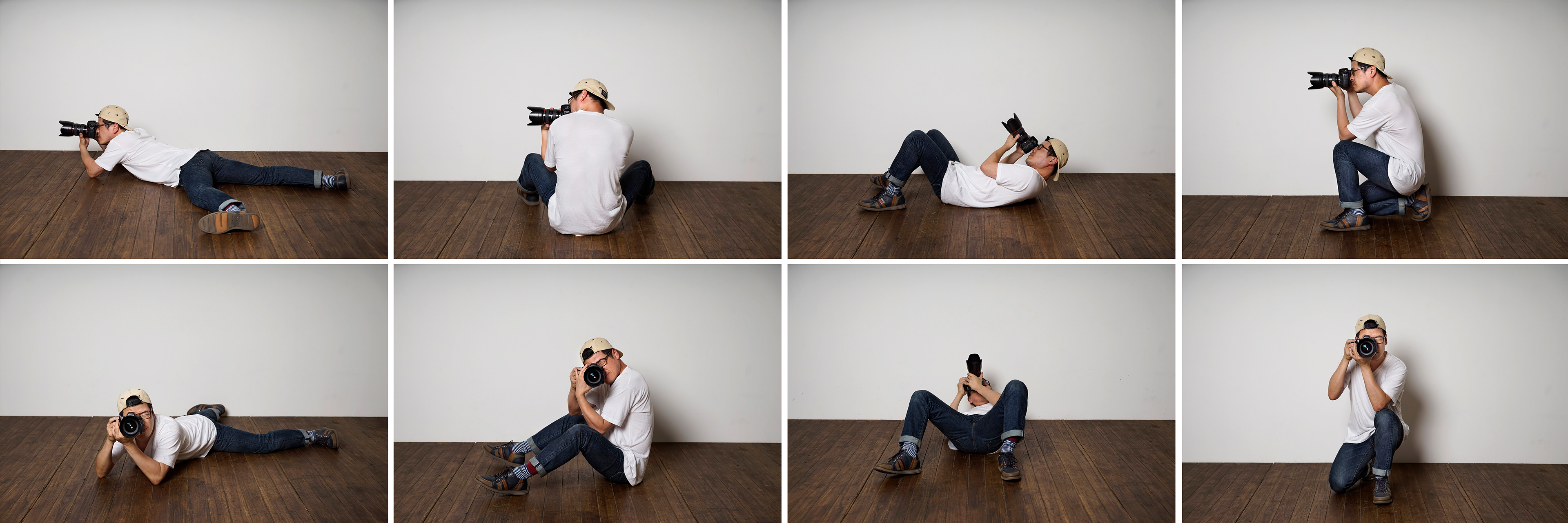
Avant-garde photographer, mixed media installation, dimension variable, 2014

Avant-garde photographer, mixed media installation, dimension variable, 2014

Avant-garde photographer, mixed media installation, dimension variable, 2014

Avant-garde photographer, mixed media installation, dimension variable, 2014

Avant-garde photographer, mixed media installation, dimension variable, 2014
Avant-Garde Photographer _Kang Su-jung
Hyunmin Ryu explores photography as a medium through experimental artworks. His original series ‘Giggle’ depicts a test subject that repeatedly attempts to perform reckless tasks in which failure is undeniable. The test subject attempts tasks, such as using an umbrella as a communications antenna or using a drying rack as wings, but repeatedly fails. The comedic photos ultimately depict the imperfections of man and the physical limitations that prevent man from achieving the desire for freedom and superpowers.
His sequel, Avant-garde Photographer maintains the elements of undeniable failure from the original, but also questions the act of taking photos.
Though the artist does admire the conceptual artists who challenged the authoritative and institutional traditions during the 1960s and 1970s, the eventual institutionalization and immortalization of conceptual art today has the artist skeptic about today’s experimental avant-garde mentality. For him, an “avant-garde photographer” is simply an artist who consistently attempts to push beyond the traditional norms.
Hyunmin Ryu became an avant-garde photographer himself by taking photographs of the empty space in which his work was going to be installed until the memory chip of his camera was filled to capacity. The resulting photos and video of the entire process is on display. His photography performance suggests a fight against institutionalized art, which is represented by the white cube. The artist portrays surplus photos as both the “spoils of war” and as scraps like shells, because when the premise of a fight is inevitable failure, both mean the same thing.
All of towels from my family house, towels, dimension variable, 2014
F3.2 1/50sec ISO500, documented image, the size that you are looking at now, 2015
F3.2 1/50sec ISO500, documented image, the size that you are looking at now, 2015

Documented image, documented image, the size that you are looking at now, 2015

Documented image, documented image, the size that you are looking at now, 2015

Documented image, documented image, the size that you are looking at now, 2015

Art work for the people who were not here

Art work for the people who were not here

In search of the perfection, mixed media installation, dimensions variable, 2015
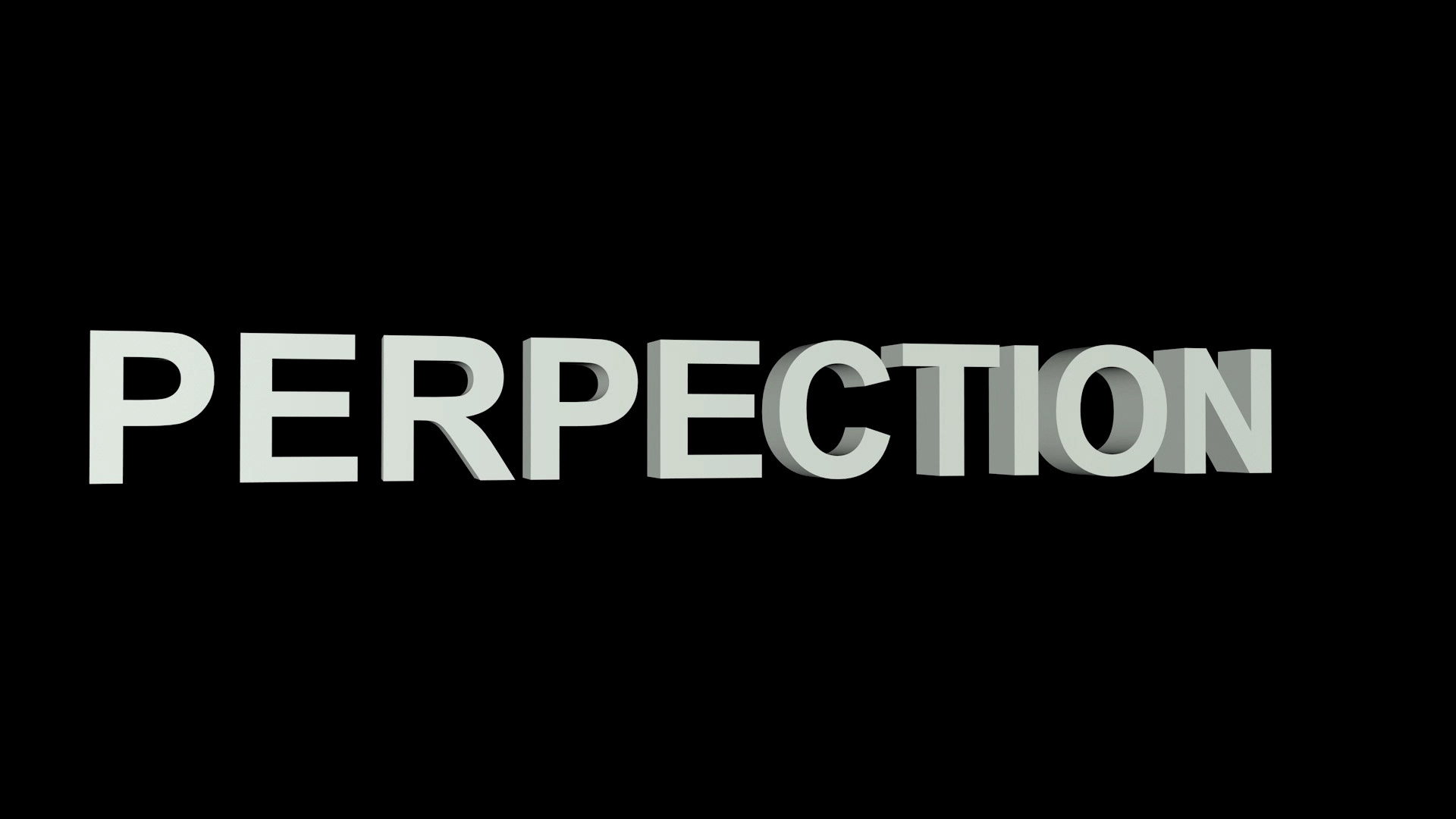
In search of the perfection, mixed media installation, dimensions variable, 2015

In search of the perfection, mixed media installation, dimensions variable, 2015

In search of the perfection, mixed media installation, dimensions variable, 2015

In search of the perfection, mixed media installation, dimensions variable, 2015
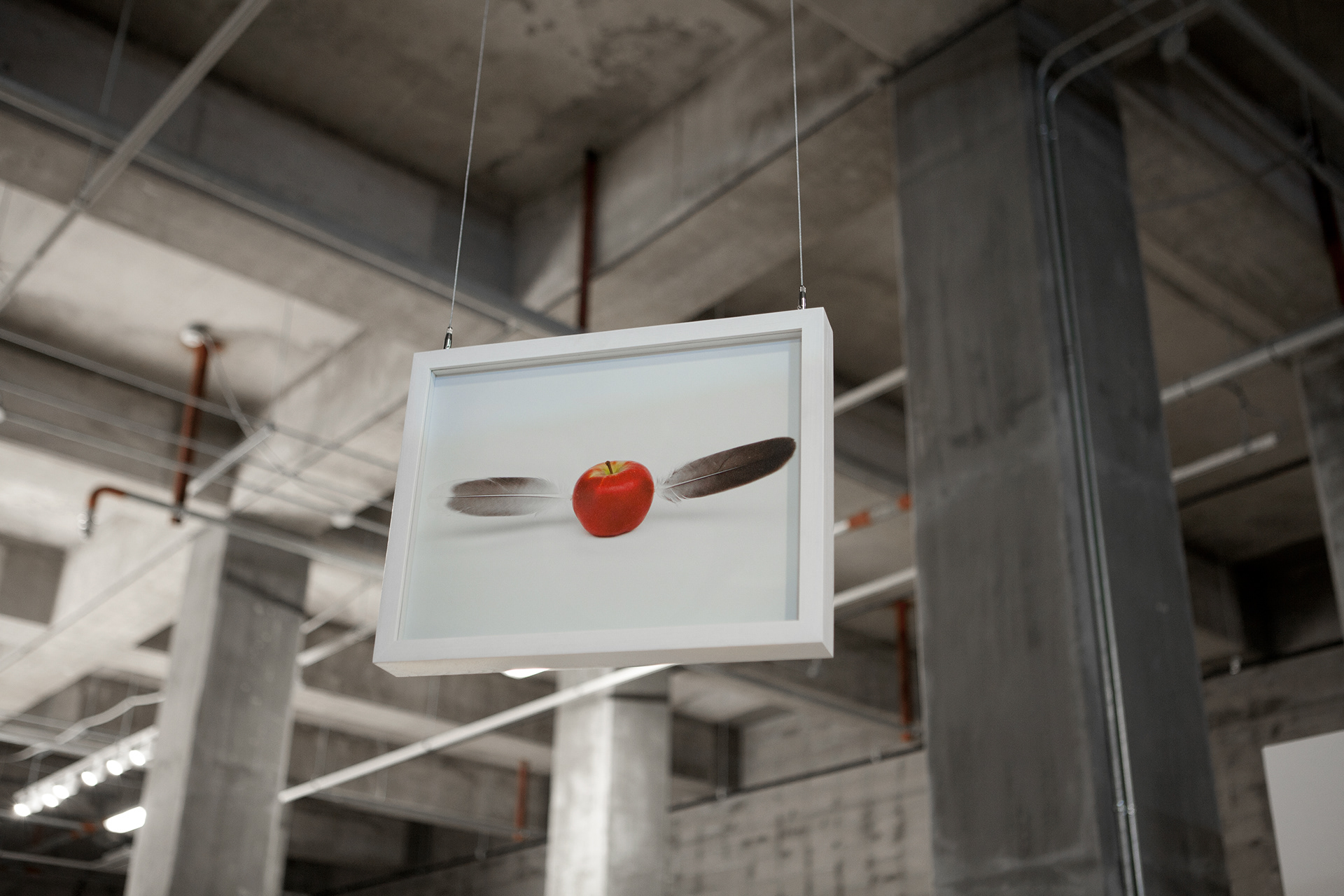
I gave up(after 3years later), mixed media installation, dimensions variable, 2015
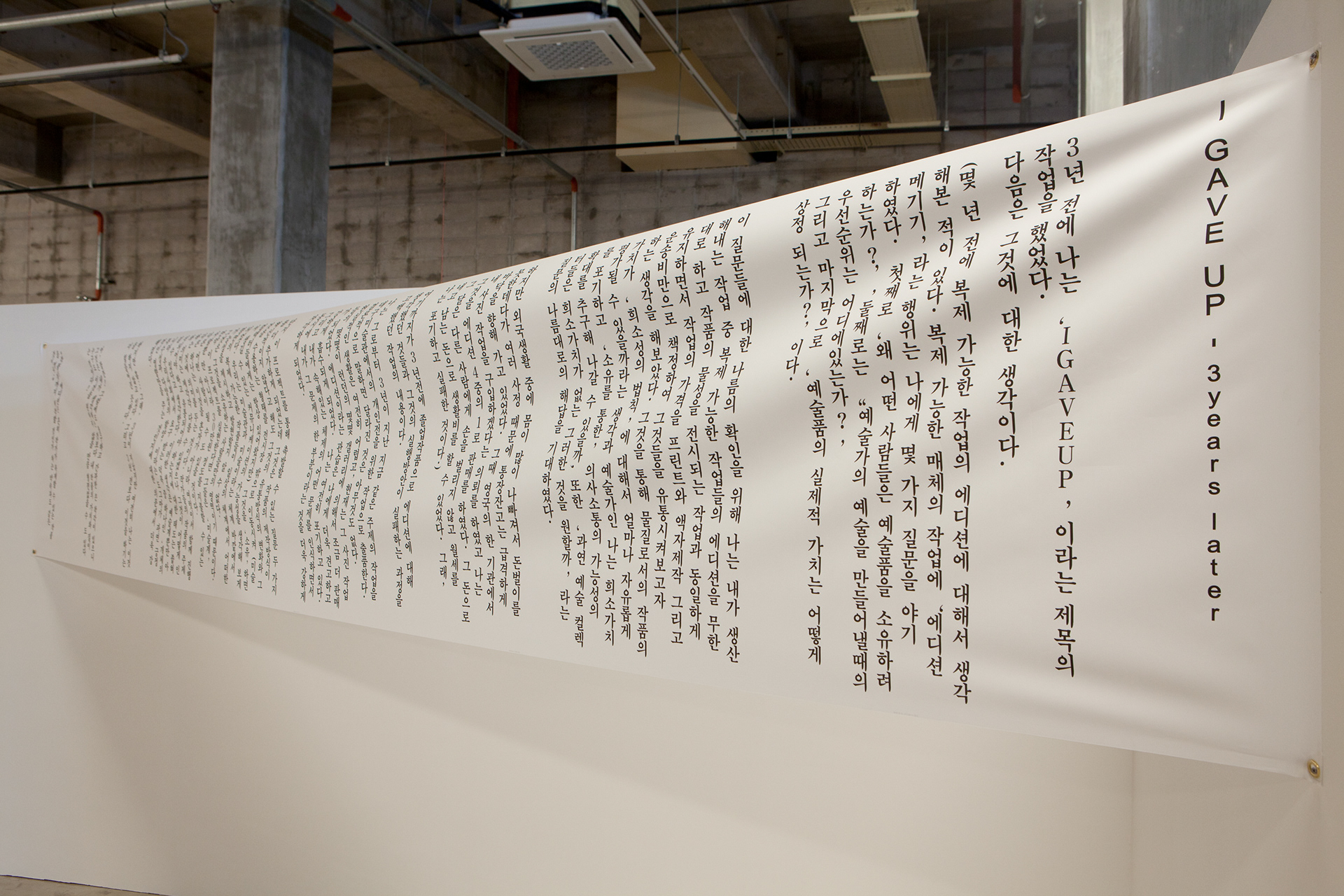
I gave up(after 3years later), mixed media installation, dimensions variable, 2015

I gave up(after 3years later), mixed media installation, dimensions variable, 2015
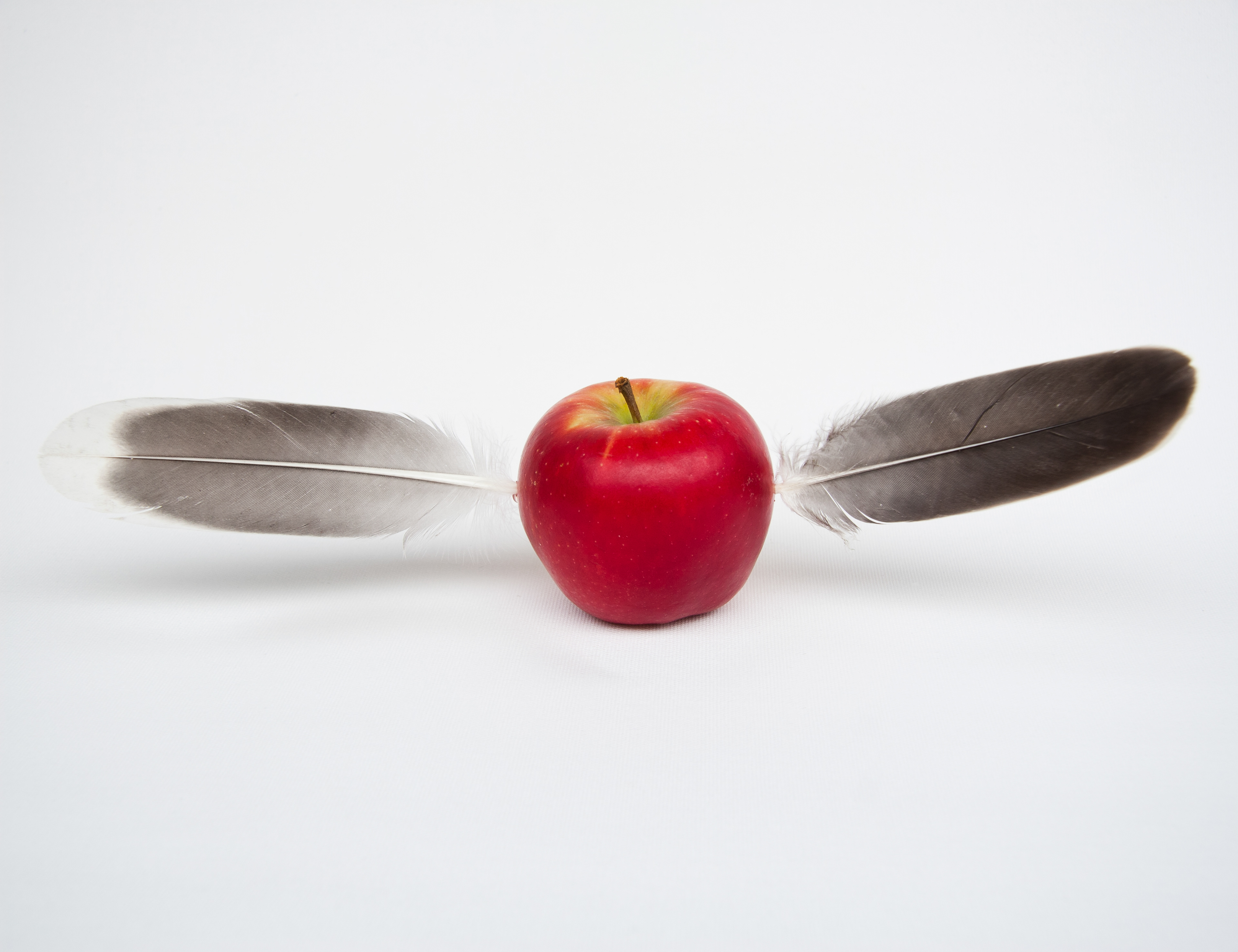
Newton1, pigment print, 30x40cm, 2011

I gave up(after 3years later), mixed media installation, dimensions variable, 2015

Missing (the distance between you & me), mixed media installation, dimensions variable, 2015
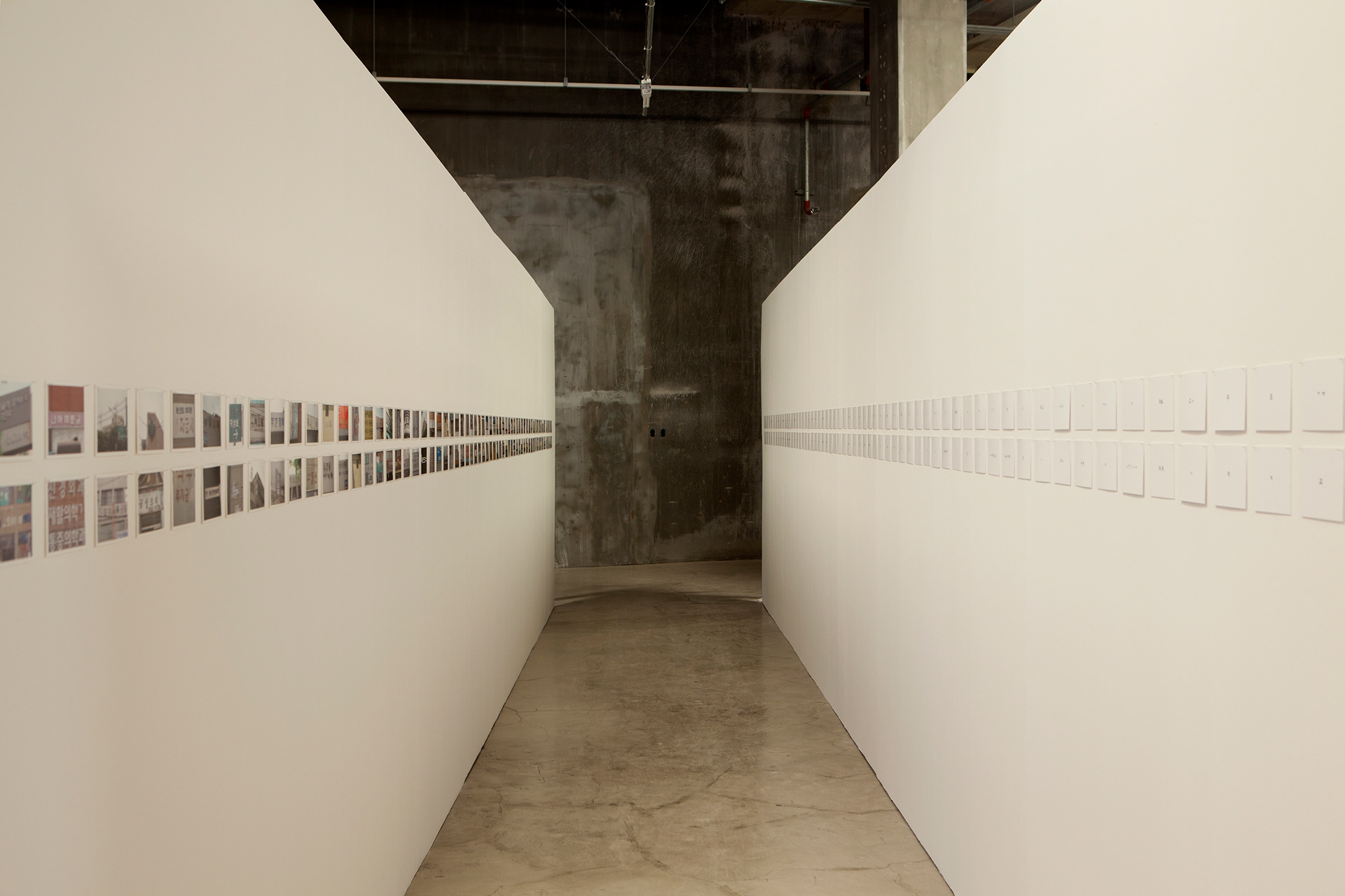
Missing (the distance between you & me), mixed media installation, dimensions variable, 2015

Missing (the distance between you & me), mixed media installation, dimensions variable, 2015
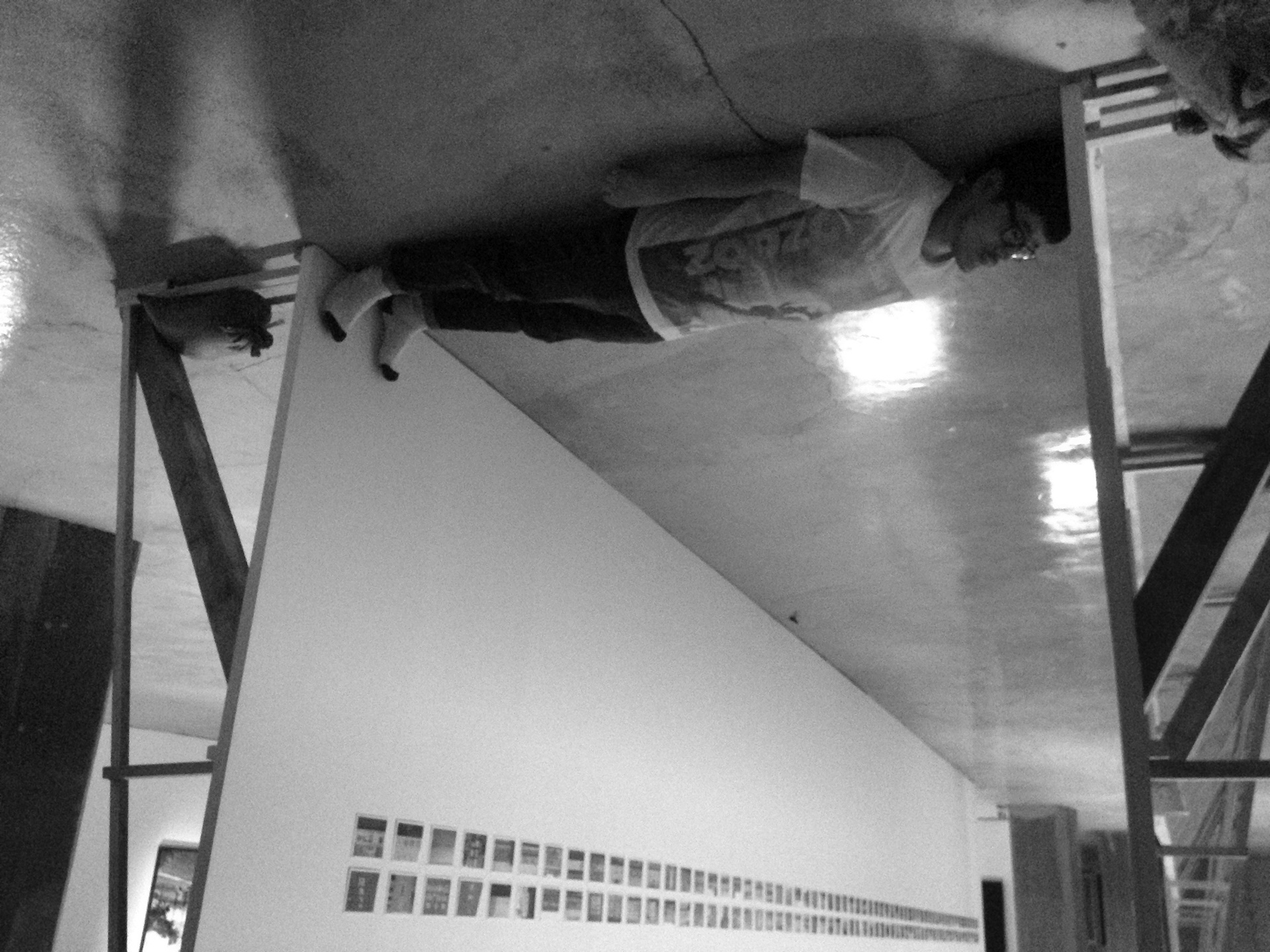
Missing (the distance between you & me), mixed media installation, dimensions variable, 2015

Missing (the distance between you & me), mixed media installation, dimensions variable, 2015

Missing (the distance between you & me), mixed media installation, dimensions variable, 2015

Missing (the distance between you & me), mixed media installation, dimensions variable, 2015
Towels, towels, dimensions variable, 2015
Towels, towels, dimensions variable, 2015
The artist puts 6800 sheets of commemorative towels like those often handed out at events in Korea on the museum floor. Spectators can take one towel if they want. As a result, the landscape of the exhibition is keep changing, and finally the gallery space is becoming empty. Remains are the documentation of the event and the towels in the sphere of ordinary life of the spectators.

standing on somewhere around Uruguay, mixed media installation, dimensions variable, 2016

standing on somewhere around Uruguay, mixed media installation, dimensions variable, 2016
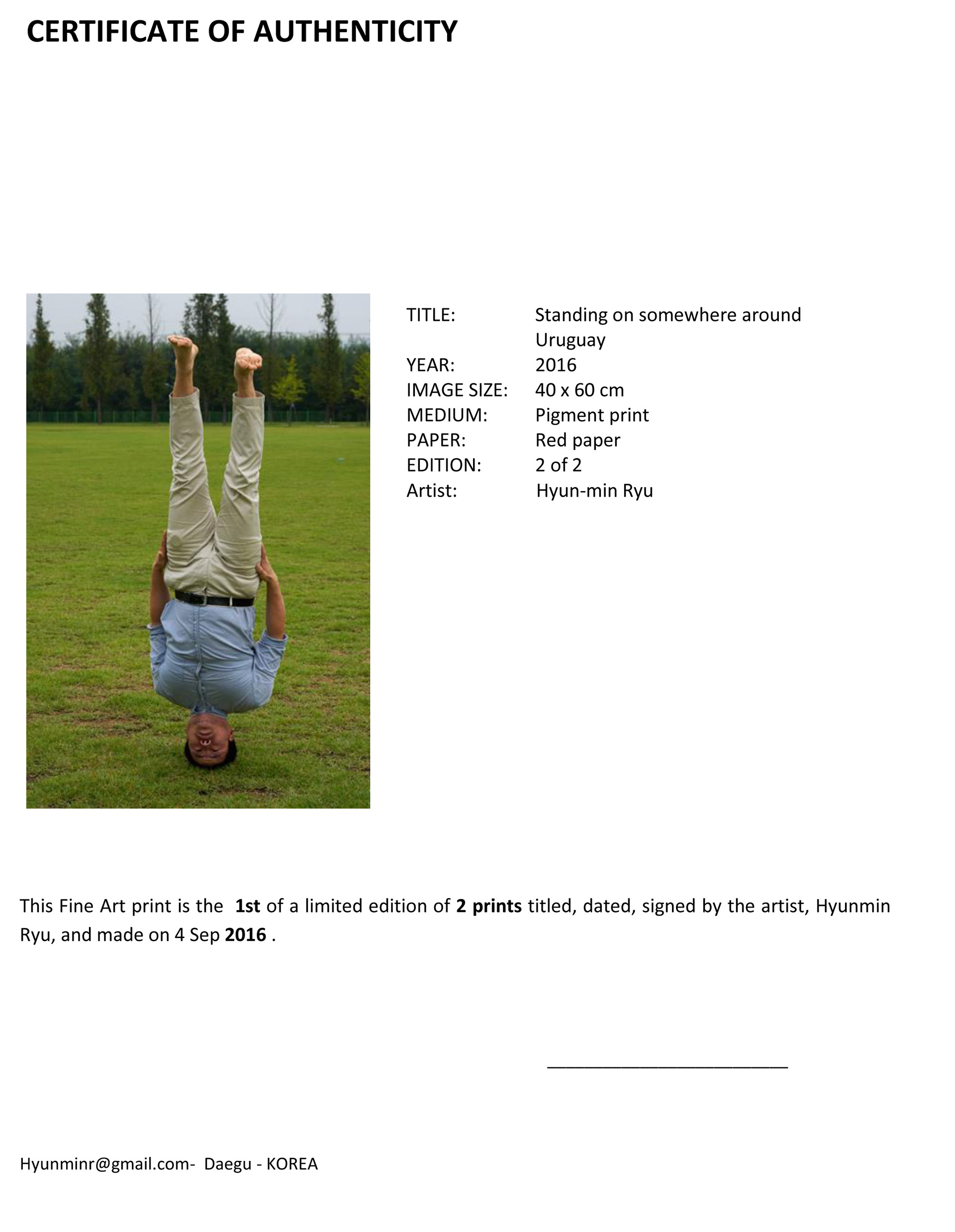
standing on somewhere around Uruguay, mixed media installation, dimensions variable, 2016

standing on somewhere around Uruguay, mixed media installation, dimensions variable, 2016

standing on somewhere around Uruguay, mixed media installation, dimensions variable, 2016

standing on somewhere around Uruguay, mixed media installation, dimensions variable, 2016
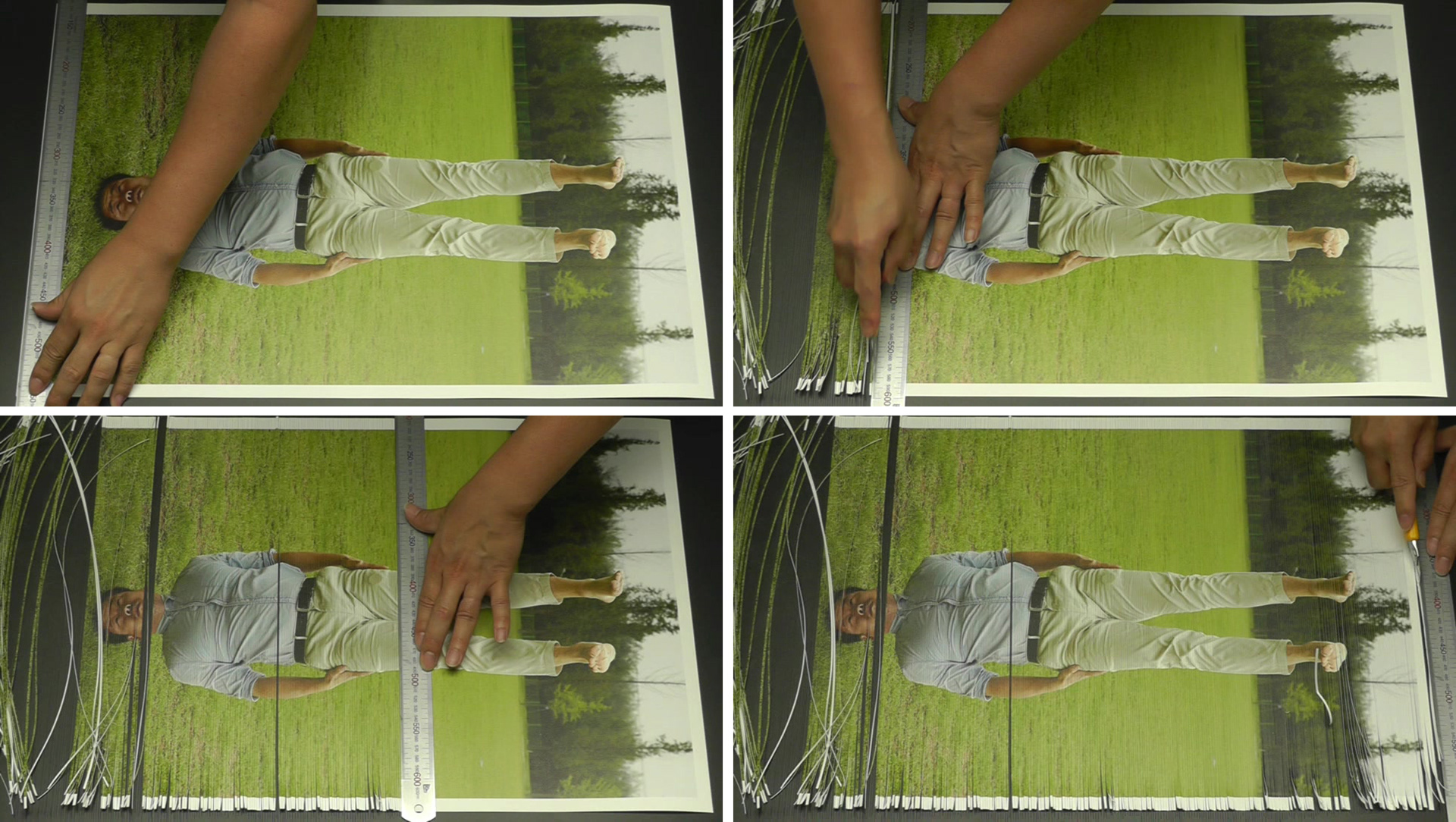
standing on somewhere around Uruguay, mixed media installation, dimensions variable, 2016
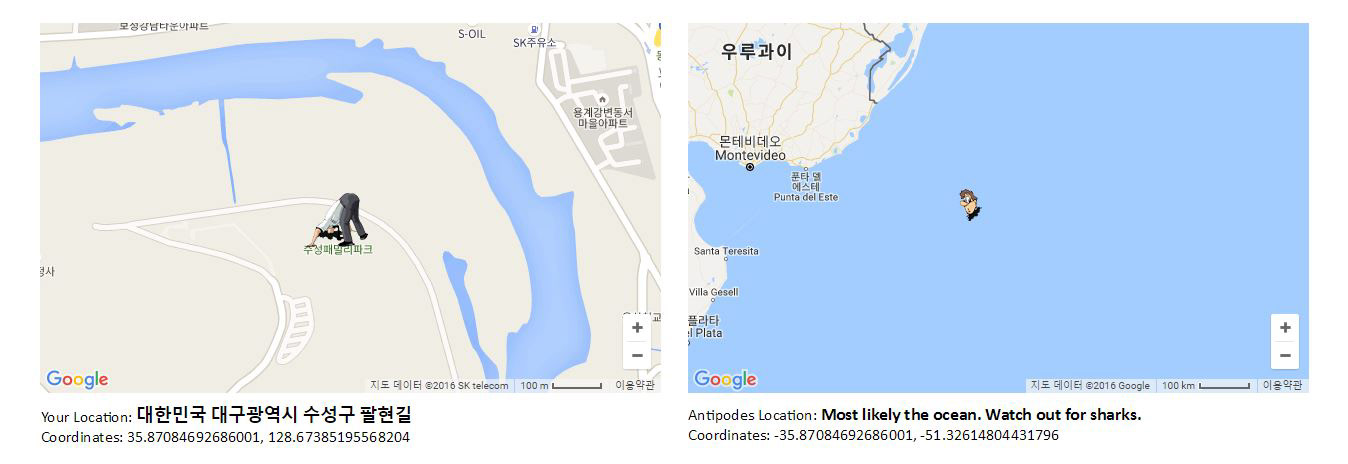
standing on somewhere around Uruguay, mixed media installation, dimensions variable, 2016
Wanderer, face mount on pigment print, wood, certificate of authenticity, 240x150x60cm, 2015

Wanderer, face mount on pigment print, wood, certificate of authenticity, 240x150x60cm, 2015

Wanderer, face mount on pigment print, wood, certificate of authenticity, 240x150x60cm, 2015
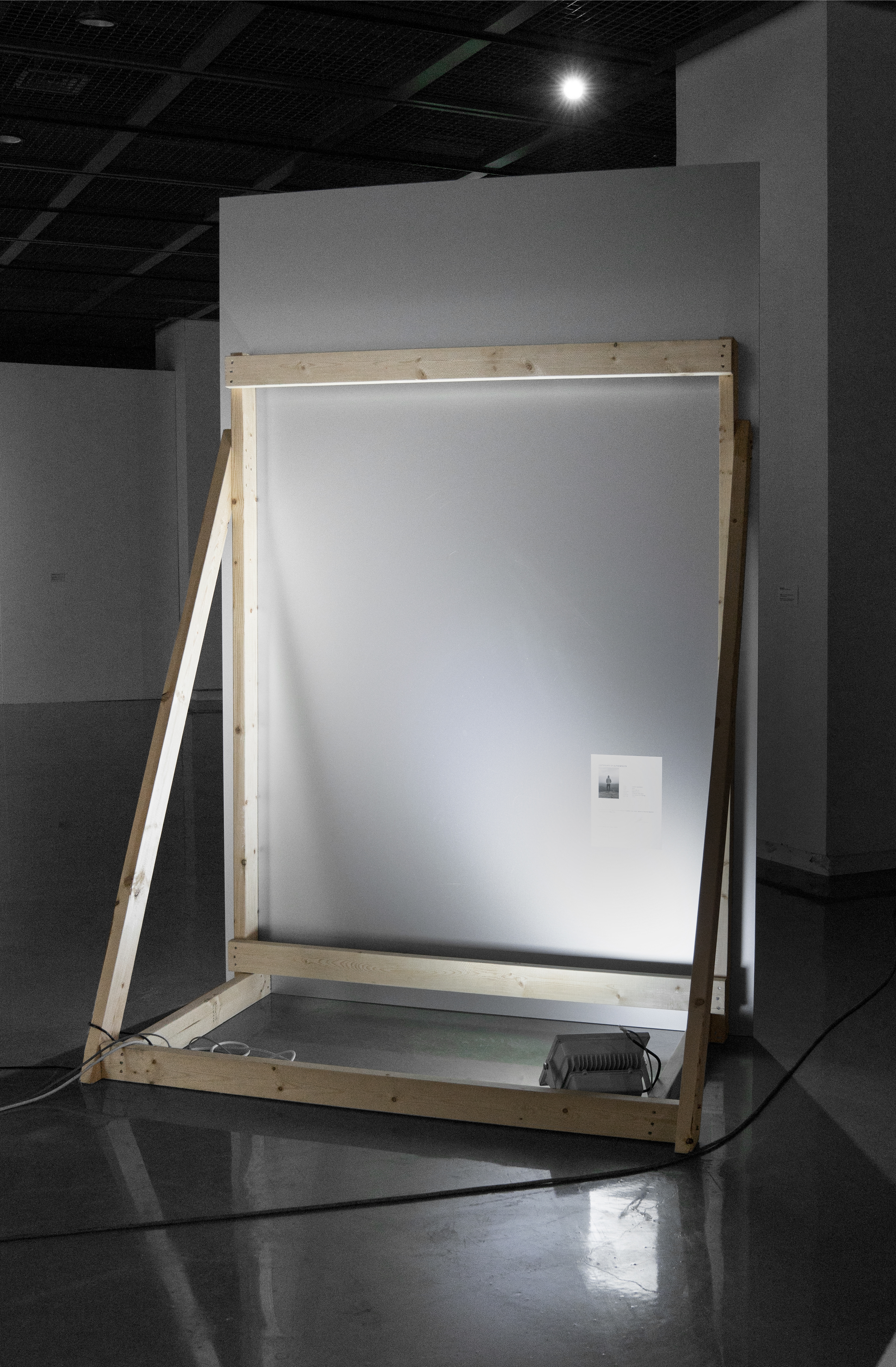
Wanderer, face mount on pigment print, wood, certificate of authenticity, 240x150x60cm, 2015

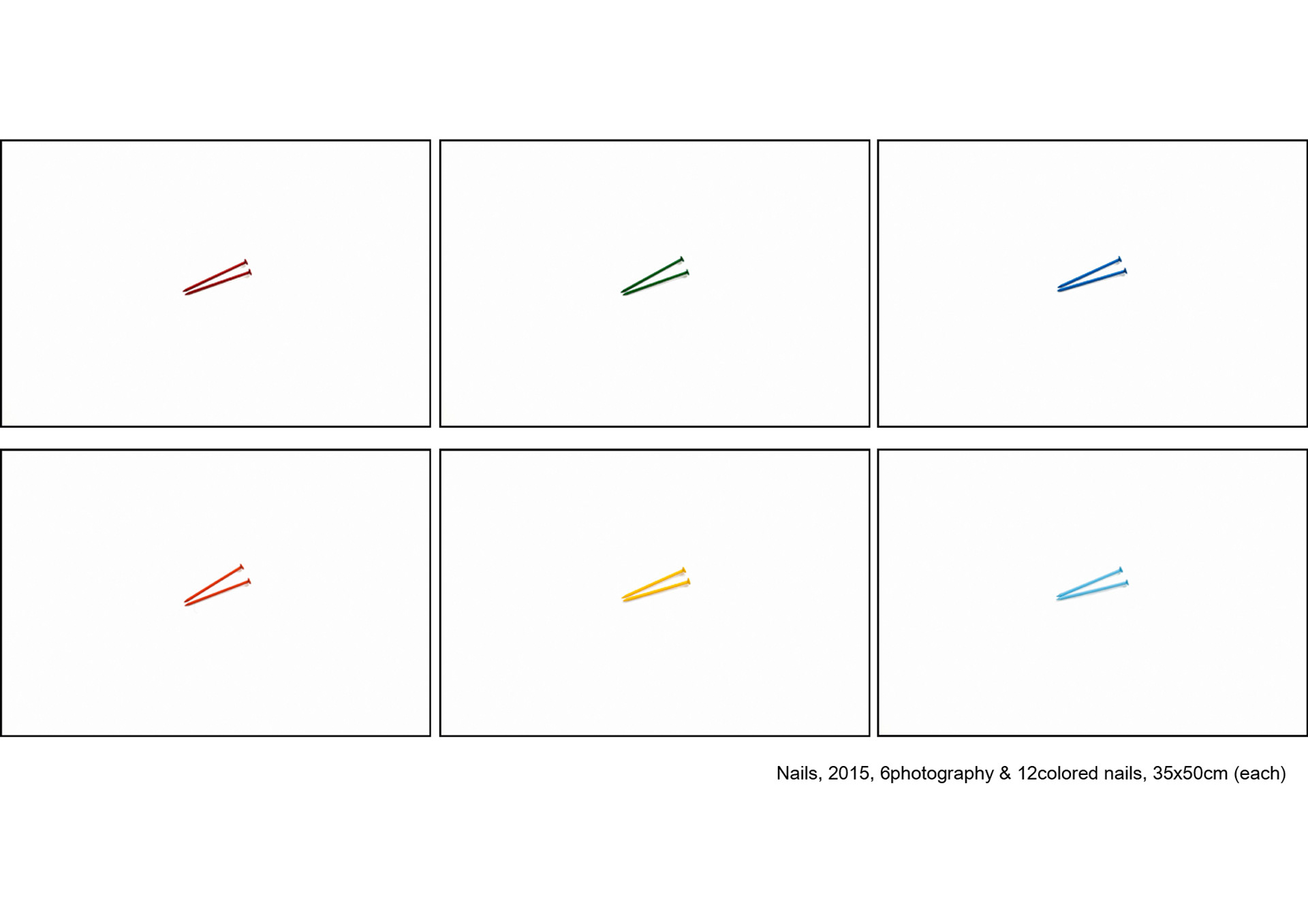

Nails
전시장의 동선을 따라서 6개의 사진이 걸려 있다. 각각의 사진은 색이 입혀진 못을 단순하게 찍은 사진이다. 마지막 사진은 사진이 설치된 못이 하나만 걸쳐져 있다. 벽에서 노출된 못은 걸려있는 사진에 찍힌 못과 같은 색이다. 관람자는 이전에 보았던 5개의 사진 또한 사진에 찍힌 동일한 색이 입혀진 못과 동일한 못에 걸려있음을 알게된다.
Six photos are hung along the movement of the galley space. Each photo is a simple photograph of a colored nail. The last photo has only one nail installed on it. The nails exposed on the wall are the same color as the nails in the hanging picture. The viewer notices that the 5 previously seen pictures are also hung on the same nails as the nails painted in the same color as the pictures.